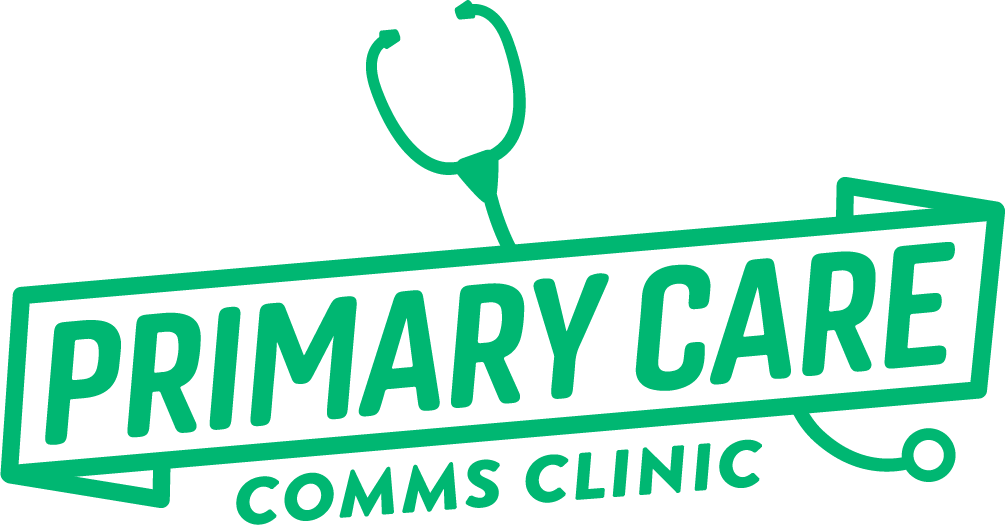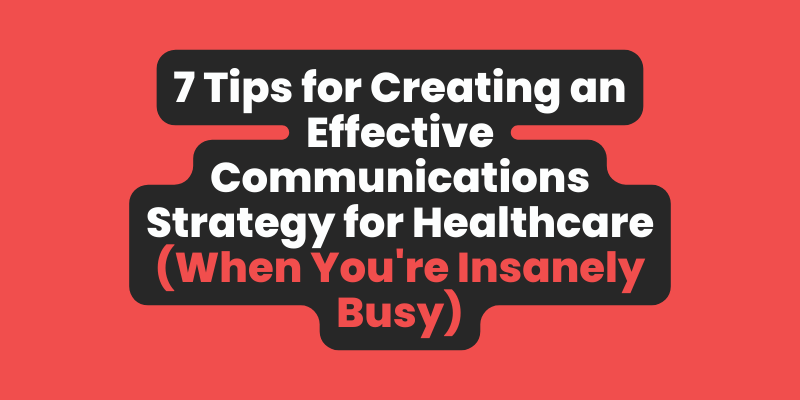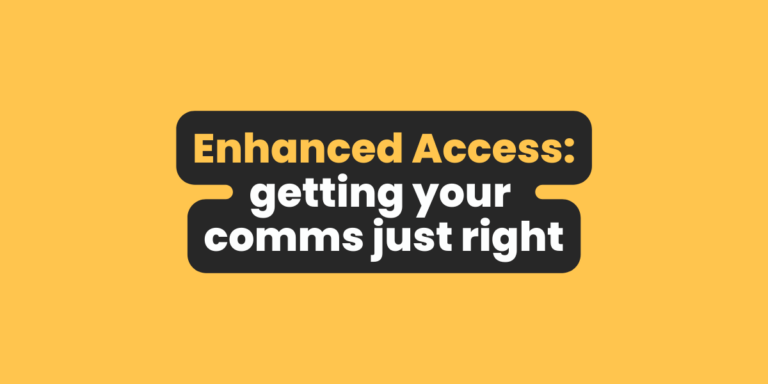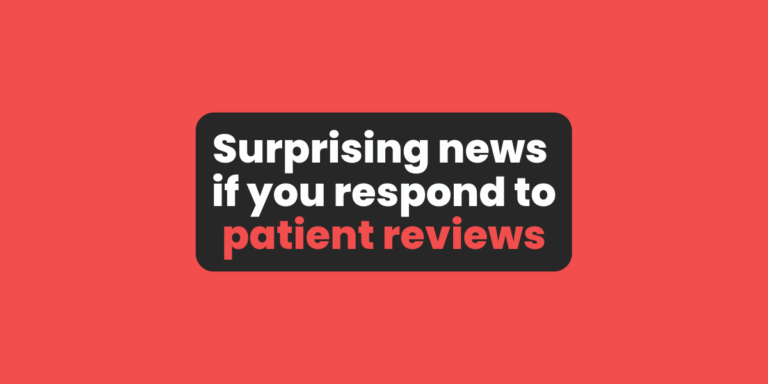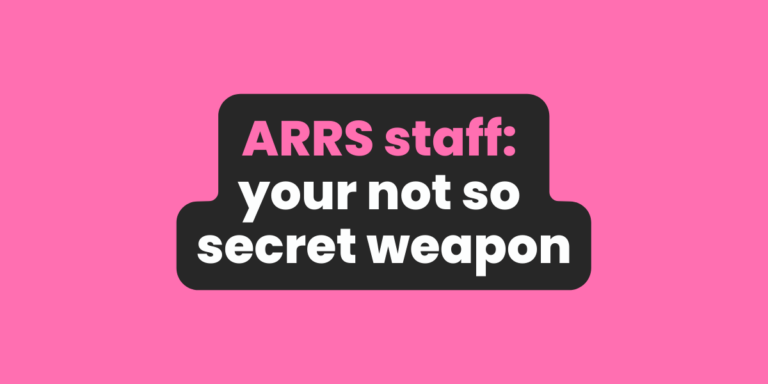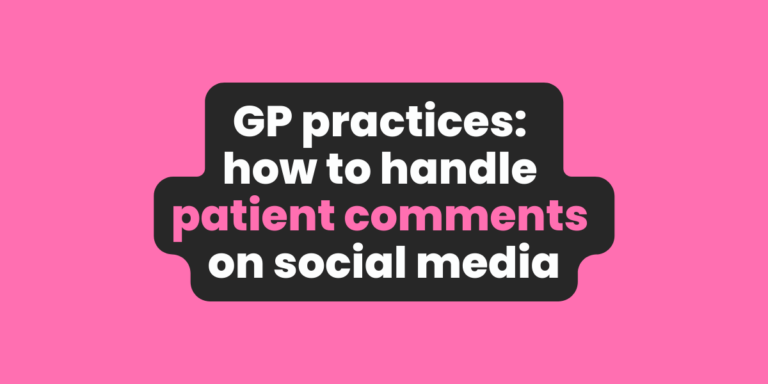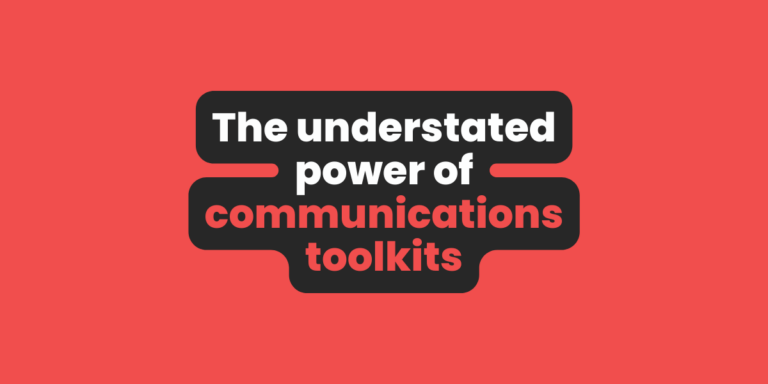In the busy consultation rooms of any healthcare business, giving good communication can sometimes feel more tricky than trying to read a doctor’s handwriting. That’s why having a top-notch communications strategy isn’t just a ‘nice-to-have’ these days; it’s as vital as your morning caffeine hit.
At Primary Care Comms Clinic, we’ve been mixing the art of caring conversation with the science of healthcare to ensure our clients are heard through the noise of every day, wherever they happen to work. From talking about new NHS concepts such as Pharmacy First with patients to giving teams the tools and templates to write and deliver their own communications strategy, nothing makes us happier than just helping small teams like ours get stuff done!
We get it, though. In the world of beepers and bandages, getting messages across clearly can sometimes feel like herding cats. But don’t worry—we’re here to decode the Morse code of healthcare communications and help you develop a winning strategy.
Why do you need to create a communications strategy for your healthcare business?
Think of communication in healthcare like making a cup of tea. If you don’t use Yorkshire Tea or forget to boil the water, the whole thing doesn’t work, right? You need a good plan to get that perfect cuppa.
A good communication strategy ensures that everyone from the top of the organisation to every team member on the ground knows what the big picture looks like. When it’s clear what everyone should expect, patients are more likely to follow health advice because it makes sense to them—shiny outcomes all around!
And your team? They’re happier, too. Feeling like you’re truly part of a team that’s moving in the right direction is the real cherry on the cake when it comes to working in the fast-paced world of healthcare.
So, how do we get there? Let’s show you.
How do you create a health communication strategy?
Time to break out the pens and flip chart paper in the middle of the floor or your desk. Grab 2 to 4 people from your team (as more brains are always better than one) and close the door for an hour or so. You want to get ideas down hard and fast.
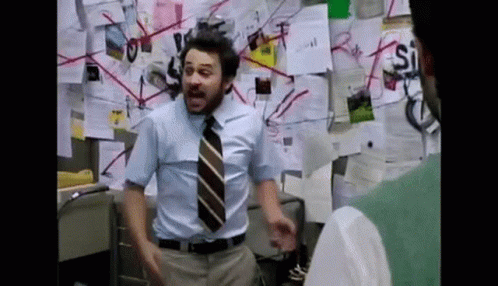
Our Comms Toolkit has a detailed step-by-step guide that will help you write a new communication strategy from scratch and comprehensively list all the questions you need to answer.
Ultimately though, if you’re ready to dive in now, the first place to focus before you dive into the “what” is the “why” or the situation analysis.
It’s time to consider where your healthcare organisation is right now to move forward with your communications effectively. You’re going to analyse your current communications environment, understanding the internal and external factors and strengths and weaknesses that could influence your strategy’s effectiveness.
- Start with your strengths. Think about this question: ‘As an organisation, we’re really good at these things, and we need to keep telling people about them.’
- Then, your challenges. Think about this question: ‘As an organisation, we’ve got some challenges, and we need to be upfront and honest about these if someone asks and when we’re talking to people.’
- Then, your opportunities. Think about this question: ‘As an organisation, we’ve got some cracking opportunities coming up that we need to plan to tell people about.’
Draw yourself a table and list your answers under the correct column. Bullet points will do so long as they are straightforward and everyone understands them.
And for each of these, you’re going to want to think about how they currently apply to:
- Your existing services
- Your team and staff
- Your patients
- Your partners, referrers and providers
- Your existing communications channels
- The bigger picture: What will your market look like over the next 12 months? List the good, bad and ugly points, together with any opportunities and threats.
Happy with that? You’re ready to move on to the next part.
What are the main elements of a health communications strategy you must spend the most time on?
So, most health communication theories say your plan should have the following sections:
- Executive summary (which you can write last)
- Situation analysis (which you’ve just done)
- Goals and objectives
- Target audience
- Key messages
- Communication channels
- Action or implementation plan
- Monitoring and evaluation
- Budget and risk management
I want to focus on the four sections you really ought to spend the most time on, as these are the ones that often fall apart without proper thought and consideration by teams trying to do their own communications strategies:
Identifying key stakeholders
First, you must be crystal clear on your key stakeholders. These are the people important to your healthcare service. They can be your patients, health professionals, and external stakeholders like your commissioners or organisations that refer to your service.
Each group of people needs and is interested in different kinds of information. Note it down.

Don’t forget, you’re going to have sub-groups too. Patients and staff especially because not all your patients and not all your staff are going to be interested in the same information. You might segment your patients by age, location, gender, which services they use most, whether they’re parents, living with long-term conditions. For staff, you might have clinical, non-clinical, remote workers. You’ll really thank yourself later by spending time on this, trust me.
Imagine your healthcare service as a big football team. Everyone playing on this team has a unique role. To win, you need to make sure every player knows what to do. That means each person or group (your stakeholders) needs the right kind of talk, attention and messaging from you.
Developing goals and objectives
What do you want your communications to achieve? These are your goals or objectives. Most strategies tend to have between three and six objectives (remember, Rome wasn’t built in a day). For example, you might want to focus on behaviour change and increasing digital take-up of the NHS App. Or, you might want to keep your people informed and make sure every staff member knows about the new shiny intranet you’ve invested in to keep things organised and safe for when CQC call around next.
Your objectives are like the stars guiding sailors at sea. They give you direction and help you stay on course. Make these goals clear and simple – always SMART if you can – so everyone knows what is important and works towards the same thing, with a matching idea of what success will look like.
For example, if someone says, “We want more patients using the NHS App,” be specific about exactly how many more patients you want. 50, 500, 50% more? Don’t move forward until you’ve got the specific numbers written down. Trust me, it’ll save your backside and help others regard communications as the vital strategic function it is within your organisation!
Choosing the right media and communication channels for your toolkit
Now, how will you send your health messages? There are many ways we can share and receive information as healthcare providers. Start by looking at what’s worked well previously, and make sure you have the stats to back that up.
Whether it’s your well-designed website, social media, digital media advertising, emails, newsletters, mass media, text messages or even face-to-face, the best choices you take will depend on who you need to talk to, what you want to say and where you’ll find those people in their greatest numbers. For example, if rural health care is what you deliver, the channels you use for health education and to inform and motivate your patients will be more varied than those of an inner-city London practice who might just need to communicate digitally.
Think about where your stakeholders like to get their information. You might think that younger people use social media a lot, but many are increasingly subscribing to newsletters and reading websites to find effective health advice more than you think. Sometimes, a quick bit of informal engagement, like a face-to-face chat, might be the best way to ensure that specific audiences understand.
Crafting key messages and effective messaging that sticks
Time to think about what you want to say. Your messages should be clear and easy to understand, like giving someone directions in a big city or the news story headlines on the BBC. You can gauge and understand exactly what’s meant in just a sentence or two.
Make sure your words help people do what they need to do as well, whether that’s a physical action like booking an appointment or downloading a health promotion app or a mental action like remembering or recognising our brand and what we do locally.
Sometimes, you may need to add supporting messages, but what are the key headlines you want each of your audiences to hear and remember? These messages should be designed to resonate well with your recipients – addressing the WIIFM (what’s in it for me) when thinking of benefits and using language and words they will be familiar with.
So, what other steps do we need to know about creating an effective communication strategy?
Creating an effective comms plan is a big task, but I liken it to following a recipe. The method doesn’t have to follow hard and fast rules, but there are some techniques you must consider during the preparation process, which I need to make you aware of:
Choosing the right times for your communications
For example, imagine you have a teenager who is embarrassed about their skin condition and is making them super self-conscious. You wouldn’t try telling them something important to improve their health just as their friends hop into the back of your car, right? Timing is key.
Really think about the year ahead, the goals and objectives you’ve set, and when your audiences will be most receptive to what you have to say. This way, they’ll be more likely to listen and remember what you’ve told them.
Plan it out
Another technique that works well for smaller healthcare teams who might feel overwhelmed and over-phased by a communications strategy is considering your comms approach as a treasure map. You need to know:
- Who is the treasure for? (That’s your audience.)
- What is the treasure? (That’s the message you want to share.)
- When is the best time to go on this hunt? (Choosing the right moment to share your message.)
- Where can they find this treasure? (Which platforms or places you’ll use to share your message, like social media, email, or digital display ads.)
- How will they understand the map? (Make sure your message is clear and easy to understand.)
Planning more visually like this helps ensure that your important message reaches the right people in the right way.
Don’t forget to evaluate and keep an eye on the ball
You work in healthcare. You’re a pro at keeping track of what you’re working on or who you’re caring for. You must do the same when deciding how to monitor and evaluate your communications strategy.
Watch how people react to what you’re sharing. Do they understand it? Are they doing what you hoped they would? If something isn’t working as well as you’d like, changing your plan is okay.
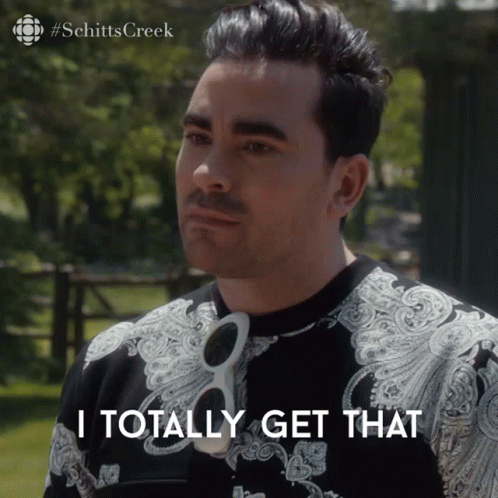
Do quick polls or surveys. Go sit with the men over 40 you want to reach by attending an Andy’s Man Club in a community centre to test your ideas with them. Your middle name is ‘Agile’ when you work in healthcare. Maybe you need to say it in a different way or share it on a different platform.
A communications strategy is about the ‘what’, and your action plan / communication plan / implementation plan (or whatever you choose to call it, is the ‘how’.
You don’t need all the details for your communications strategy at this stage—this is a big-picture, high-level, bird’s-eye view of what you’ll be focusing on.
How do communications strategies differ for healthcare businesses from other businesses?
Having worked in marketing communications for over 20 years, I get asked this one a lot, and while yes, there are similarities in the general principles of creating and executing a communication strategy, communicating in healthcare is just…well, very special.
It’s not just about sharing information, selling services or educating patients; it’s about doing so in a way that respects the setting, the people, and the unique challenges they face every day. You can’t get any more personal, emotional or considerate than you do in healthcare.
Being sensitive to the setting
Imagine you’re walking through a busy hospital. In some areas, it’s very run-of-the-mill, business as usual with outpatient appointments and the smell of buttered toast in the air. Walk a bit further and staff could be welcoming brand new lives into the world or fighting frantically to save a life in another.
Each of these places needs a different way of sharing information. Quieter areas may make it easier for staff to be involved in training or meetings to gain the necessary information. In contrast, messaging would need to be delivered very differently in the A&E department to cut through the chaos there.
The same goes for all your comms and messaging. Think about the settings in which your messaging will find its audience. Is it quiet? Is it busy? Is it at 2am when a new mum might be up doing a nighttime feed? Does it need to be said in person? Would it reach staff working remotely? Would your patients want to read about your community health news on Facebook when all they’ve logged on to do is see their friend’s new puppy photos? (Personally, I’m there for puppy photos no matter who they belong to!) Really think about the settings of your audience.
Choosing the right tone
Everyone in healthcare plays a vital role, from the doctors and nurses to the receptionists and admin staff, who make appointments and keep everything running tickety-boo. Sharing information in a way that makes sense to everyone is essential.
Some people know a lot about health because they’ve read about it online, while others have learned about it through their work. Never assume that your audience will understand what you mean. People’s understanding can also change depending on their situation.
Take health literacy, for example. We all need to understand and use verbal and written health information effectively. We all know low levels of health literacy affect patients living in high deprivation more, but even if you work in healthcare, your health literacy gets knocked temporarily all the time—when you’re hungry, angry, lonely, or tired, for example.
Your messages must be clear and easy for everyone to understand, no matter their background. They must get straight to the point and be understood quickly.
Keeping it short and supportive
Talking of getting straight to the point, working in healthcare, we all respect the saying “time is short” better than most. And this affects how our industry communicates because most of the time, we’re trying to care for people quickly, save lives, and do many complex, often life-transforming tasks at once.
That’s why everything we communicate needs to respect people’s precious time and keep messaging short, minus the waffle.
Patients, staff, and stakeholders: People often don’t have the luxury of reading long messages in healthcare, but they can and will make time to read something if it genuinely offers them value (like we hope this blog is doing!).
Also, in healthcare marketing, we typically craft messaging to be supportive, whether it’s for stressed-out staff or patients living with chronic pain. We care for others, often under tough conditions. In healthcare, every word matters and should show we care.
What support is there for creating and implementing an effective communications strategy or plan?
Nowadays, you’ll be pleased to learn that you have plenty of tools and support to help you create and implement an effective healthcare communications strategy, but you’ll need to check what best fits your situation.
Turning to online guides
The internet is sometimes a treasure chest full of helpful tools—that’s probably how you stumbled across this blog. A generic communications strategy found online can act like your map, showing you the steps to write a simple communication strategy and providing you with a blank slate.
They help you understand where to start and what comes next, but you’ll still need to do a lot of the heavy lifting yourselves applying it to healthcare, which you might not have the time or skillset to do between caring for patients.
Leveraging AI tools
I, for one, welcome the glorious days when robots can do most of the boring stuff we don’t want to do at work, but we’re far from that yet. At the moment, we have AI tools such as ChatGPT or Gemini from Google, which can give us a helping hand.
These generative AI tools can sift through a lot of information very fast, helping you do your research but always fact-check what they generate. They can also probably give you a decent outline of your strategy – kind of like drawing a sketch of your plan. But just like a sketch needs colours and detail to become a masterpiece, you’ll still need to add your own touch to the outline to make sure it’s tailor-made for your specific communication needs.
Saving time and money by choosing Primary Care Comms Clinic 😎
Last but not least, you can skip the guesswork and just chat with us at Primary Care Comms Clinic. Like a friendly coach cheering you on and helping you improve, we can review, write, and help you deliver your communications strategy with you.
Or, if you work in general practice, our Comms Toolkit subscription is an absolute steal. It includes templates and a detailed walk-through to complete your very own communications strategy, as well as over 120 other handy communications resources to help you every day.
Conclusion
Phew! So yes, communications can help and yes, putting together a communication strategy for your healthcare business is really important. It’s not just an extra thing to do; it’s a central part of keeping your business healthy.
My final tip is to remember that you can have the best strategy or plan in the world, but you should always be ready to change it.
Just like health, sometimes, communications don’t go as planned. And that’s okay! If you find out that things aren’t working as well as you’d like, you can and should change course. This keeps your strategy strong and your advantage sharp.
Author: Kara Skehan, managing director at Primary Care Comms Clinic
